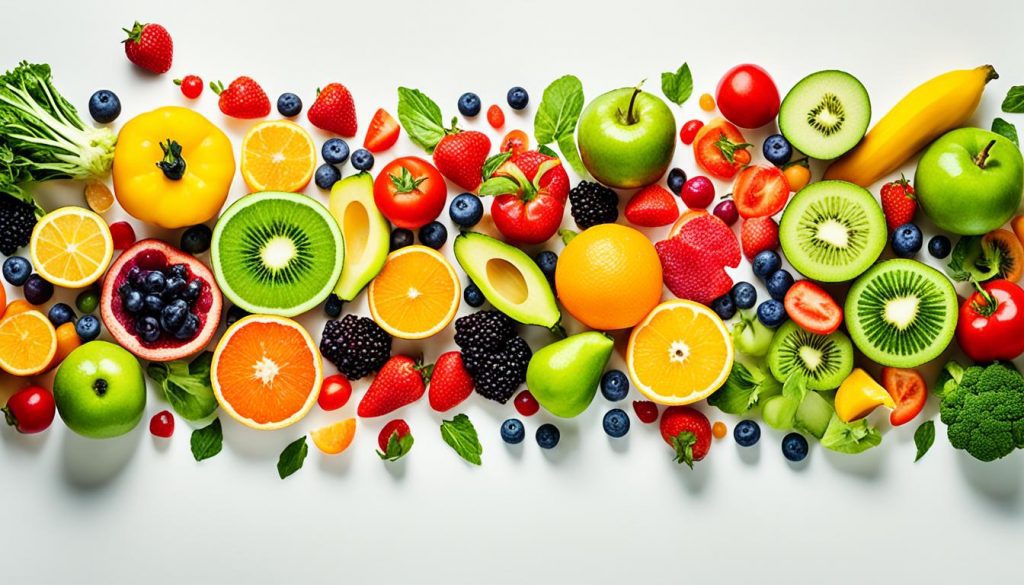Good food choices are important for children’s growing bodies and minds. As parents, it is our responsibility to ensure that our children receive the nutrition they need to thrive. By teaching them healthy eating habits and providing a balanced diet, we can set them up for a lifetime of good health.
When it comes to nutrition for children, it’s not just about what they eat, but also about the example we set. We need to be role models by eating healthy and being physically active ourselves. Involving the whole family in meal planning and cooking can make healthy eating easier and more enjoyable.
The GO, SLOW, WHOA approach to food can help children make healthier choices. GO foods are those that should be eaten often, such as fruits, vegetables, and whole grains. SLOW foods are those that should be eaten in moderation, like lean proteins and dairy products. WHOA foods are those that should be limited, such as sugary and fatty foods.
While it’s true that healthier diets can sometimes be more expensive, there are ways to make them affordable. Buying in-season fruits and vegetables, buying in bulk, and planning meals ahead of time can help save money while still providing nutrient-rich foods for our children.
Packing healthy lunches and snacks for our children can also make a big difference. By including a variety of fruits, vegetables, whole grains, and proteins, we can help them make better food choices even when they’re at school or out and about.
Reading Nutrition Facts labels is another important skill that can help guide us in making healthier food choices for our children. By checking the calorie, fat, sugar, and sodium content of packaged foods, we can make more informed decisions about what we bring into our homes.
Key Takeaways:
- Good food choices are important for children’s growing bodies and minds.
- Parents should be role models by eating healthy and being physically active.
- The GO, SLOW, WHOA approach to food can help children make healthier choices.
- Healthier diets can be affordable and nutrient-rich.
- Involving the whole family in meal planning and cooking can make healthy eating easier.
The Importance of a Balanced Diet for Children
A balanced diet is crucial for children’s growth and development. It provides the necessary nutrients for healthy bodies and minds. A balanced diet includes a variety of food groups, such as fruits, vegetables, whole grains, lean proteins, and dairy products. It is important to limit the intake of sugary and fatty foods, as they do not provide the necessary nutrients.
Children need a balanced diet to support their growth and development. Each food group plays a vital role in providing essential nutrients that contribute to their overall health.
Fruits and vegetables: These are rich in vitamins, minerals, and fiber, which are important for children’s growth and digestion. Encourage your child to eat a variety of fruits and vegetables every day.
Whole grains: These provide energy and fiber, which help regulate digestion and keep children feeling full for longer. Include whole grain bread, pasta, rice, and cereals in your child’s diet.
Lean proteins: Protein is essential for children’s growth, as it helps build and repair tissues. Good sources of lean protein include lean meats, poultry, fish, eggs, nuts, and legumes.
Dairy products: These are rich in calcium, which supports healthy bones and teeth. Include low-fat milk, cheese, and yogurt in your child’s diet, unless they have any allergies or intolerances.
In addition to these food groups, it is important to limit the intake of sugary and fatty foods. These types of foods provide empty calories and do not contribute to children’s overall health and well-being.
A balanced diet not only supports physical health, but it also plays a crucial role in children’s cognitive development and academic performance. By providing children with the necessary nutrients, parents can help promote their overall well-being and set them up for a lifetime of healthy eating habits.
| Food Group | Recommended Servings |
|---|---|
| Fruits and Vegetables | 5 servings per day |
| Whole Grains | 6 servings per day |
| Lean Proteins | 2-3 servings per day |
| Dairy Products | 2-3 servings per day |
Tips for Promoting Nutrition in Kids
When it comes to promoting nutrition in kids, there are several strategies that parents can implement to encourage healthy eating habits. By being good role models, involving children in meal planning and cooking, and keeping healthy foods readily available, parents can set their kids on the path to a nutritious diet.
Be a Good Role Model
Children learn by example, so it’s important for parents to demonstrate healthy eating habits. By making nutritious choices ourselves, we can inspire our kids to do the same. This means incorporating plenty of fruits, vegetables, whole grains, lean proteins, and dairy products into our own diets. Let’s show our kids that healthy eating is not only beneficial but also delicious!
Involve Kids in Meal Planning and Cooking
Engaging children in meal planning and cooking can make them more invested in the food they eat. Let’s give them the opportunity to choose healthy ingredients and participate in age-appropriate kitchen tasks. We can make it a fun family activity by trying new recipes together and exploring different flavors and textures. This hands-on approach will not only promote nutrition but also help develop important life skills.
Keep Healthy Foods Readily Available
One of the keys to promoting nutrition in kids is to have a variety of nutritious foods easily accessible. Stocking the pantry and refrigerator with fresh fruits, cut-up vegetables, whole-grain snacks, and low-fat dairy products encourages children to make healthy choices. When they see these options readily available, they are more likely to reach for them as snacks or incorporate them into their meals.
Limit Unhealthy Snacks and Sugary Drinks
While it’s important to keep healthy foods readily available, it’s equally crucial to limit the availability of unhealthy snacks and sugary drinks. These items provide little to no nutritional value and can contribute to poor eating habits. Let’s opt for healthier alternatives such as homemade fruit popsicles, yogurt parfaits, or veggie sticks with hummus. By reducing the intake of unhealthy snacks and sugary drinks, we can promote overall better nutrition for our kids.
Encourage Trying New Foods
Introducing children to a variety of foods can expand their palates and promote good nutrition. Encourage them to try new foods, even if they show initial resistance. It can take several attempts before a child develops a taste for certain foods, so let’s be patient and continue offering a diverse range of options. We can make it more exciting by creating food exploration challenges or themed meals that introduce new flavors and cuisines.
By following these tips, we can play an active role in promoting nutrition in our kids’ lives. From being positive role models to involving them in meal planning and cooking, every small step counts. Let’s nurture their healthy eating habits from an early age and set them up for a lifetime of balanced nutrition and well-being.


Meal Ideas for Toddlers
Toddlers have unique nutritional needs and can be picky eaters. It’s important to offer them a variety of nutrient-rich foods in small portions to meet their nutritional needs while also encouraging healthy eating habits. Here are some toddler meal ideas that are both delicious and nutritious:
1. Fruits and Vegetables
Introduce your toddler to a variety of fruits and vegetables to provide essential vitamins and minerals. Slice some bananas, strawberries, or blueberries for a colorful and tasty snack. Steamed or roasted carrots, green beans, or broccoli florets make excellent side dishes.
2. Whole-Grain Cereals and Breads
Choose whole-grain cereals or breads that are fortified with iron and other important nutrients. Oatmeal topped with sliced bananas or whole-grain toast spread with nut butter are nutritious and easy-to-prepare options.
3. Lean Proteins
Include lean proteins in your toddler’s meals to support their growth and development. Offer small portions of cooked chicken, turkey, or fish. Vegetarian options like beans, lentils, and tofu are also great sources of protein.
4. Dairy Products
Dairy products like yogurt and cheese provide essential calcium for growing bones. Opt for plain or low-sugar yogurt and serve it with fresh berries or chopped fruits. Cheese cubes or string cheese make convenient and nutritious snacks.
5. Finger Foods
Toddlers enjoy exploring and feeding themselves, so incorporate finger foods into their meals. Offer bite-sized pieces of soft fruits like mango or avocado, cooked pasta shapes, or small cubes of whole-grain bread.
Remember to introduce new foods gradually and offer a variety of options to encourage your toddler’s curiosity and adventurous palate. Keep in mind portion sizes appropriate for their age and appetite. By providing a balanced and appealing selection of meals, you can promote healthy eating habits and ensure your toddler gets the nutrition they need.
| Meal Ideas for Toddlers | ||||
|---|---|---|---|---|
| Fruits and Vegetables | Whole-Grain Cereals and Breads | Lean Proteins | Dairy Products | Finger Foods |
| Bananas, strawberries, blueberries | Oatmeal, whole-grain toast | Chicken, turkey, fish | Yogurt, cheese | Mango, avocado, pasta |
| Carrots, green beans, broccoli | Beans, lentils, tofu | Whole-grain bread |
Childhood Nutrition Guidelines
Childhood nutrition guidelines are essential for ensuring that children receive the necessary nutrients for their growth and development. These guidelines provide valuable recommendations on the types and amounts of food that children should consume to maintain good health.
The Importance of a Balanced Diet
A balanced diet is the foundation of childhood nutrition guidelines. It emphasizes the inclusion of a variety of food groups in children’s meals to ensure they receive all the essential nutrients.
A balanced diet for children should include:
- Fruits and vegetables: These should make up a significant portion of children’s meals, providing essential vitamins, minerals, and fiber.
- Whole grains: Foods like whole wheat bread, brown rice, and oatmeal are rich in fiber and provide sustained energy.
- Lean proteins: Including sources like poultry, fish, beans, and tofu helps children build and repair tissues and supports their overall growth.
- Dairy products: Milk, cheese, and yogurt are important for calcium, which is vital for bone development.
Sugary and fatty foods should be limited to maintain overall health. These guidelines aim to promote healthy eating habits in children, setting them up for a lifetime of good nutrition.
| Food Group | Recommended Servings |
|---|---|
| Fruits and Vegetables | 5 servings per day |
| Whole Grains | 6-8 servings per day |
| Lean Proteins | 2-3 servings per day |
| Dairy Products | 2-3 servings per day |
Tips for Promoting Healthy Eating Habits in Children
As parents, we have the power to shape our children’s eating habits and set them on a path towards a lifetime of healthy choices. Here are some tips to promote healthy eating habits in children:
- Lead by example: Children learn by watching and imitating, so it’s important for us to model healthy eating habits ourselves. Let’s show them that we enjoy nutritious foods and make them a regular part of our meals.
- Involve children in meal planning and preparation: By involving children in the process of planning and preparing meals, we can increase their interest in healthy foods. Let’s take them grocery shopping, let them choose fruits and vegetables, and encourage them to help in the kitchen.
- Create a positive eating environment: Make mealtimes a pleasant and stress-free experience. Set aside dedicated time for family meals, turn off electronic devices, and engage in meaningful conversations. This fosters a positive relationship with food and encourages mindful eating.
- Limit the availability of unhealthy snacks and sugary drinks: Keep unhealthy snacks out of sight and stock up on healthier alternatives like fresh fruits, cut vegetables, and whole grain snacks. Opt for water or milk instead of sugary drinks to quench thirst.
- Provide a variety of nutritious foods: Offer a wide range of food options to expose children to different flavors and textures. Include fruits, vegetables, whole grains, lean proteins, and dairy products in their meals. Make it fun by presenting foods in creative ways and experimenting with different recipes.
- Encourage children to try new foods: It’s common for children to be hesitant about trying new foods. Encourage them to take small bites and explore new flavors. Be patient and positive, as it may take several attempts before they develop a taste for certain foods.
By following these tips, we can foster a love for nutritious foods and establish healthy eating habits in our children. Remember, promoting nutrition in kids is a journey that requires our patience, consistency, and dedication.
Now let’s take a look at some meal ideas for toddlers to ensure they are getting the right nutrition.
Conclusion
Nutrition is essential for the growth and development of children. As parents, it is our responsibility to promote good nutrition in kids and help them develop healthy eating habits. By being role models, involving children in meal planning and cooking, and providing a variety of nutritious foods, we can ensure that our children receive the balanced diet they need.
Following childhood nutrition guidelines and incorporating tips for promoting healthy eating habits can guide us in making informed choices for our children’s nutrition. By prioritizing nutrition, we can set our children up for a lifetime of healthy eating habits and contribute to their overall well-being.
Let’s remember that good nutrition for children goes beyond just providing the necessary nutrients. It is about fostering a positive relationship with food and teaching them the importance of making healthy choices. By instilling these values early on, we can empower our children to lead healthy and fulfilling lives.
FAQ
Why is nutrition important for children?
Good food choices are important for children’s growing bodies and minds. Nutrition provides the necessary nutrients for healthy growth and development.
What should a balanced diet for children include?
A balanced diet for children should include a variety of food groups, such as fruits, vegetables, whole grains, lean proteins, and dairy products.
How can parents promote nutrition in kids?
Parents can promote nutrition in kids by being good role models, involving children in meal planning and cooking, and providing a variety of nutritious foods.
What are some meal ideas for toddlers?
Toddler-friendly meal ideas include small portions of fruits and vegetables, whole-grain cereals and breads, lean proteins, dairy products, and finger foods that are easy for toddlers to handle.
What are childhood nutrition guidelines?
Childhood nutrition guidelines provide recommendations for the types and amounts of food children should consume. These guidelines emphasize the importance of a balanced diet and limiting sugary and fatty foods.
How can parents promote healthy eating habits in children?
Parents can promote healthy eating habits in children by setting a good example, involving children in meal planning and preparation, and creating a positive eating environment.



